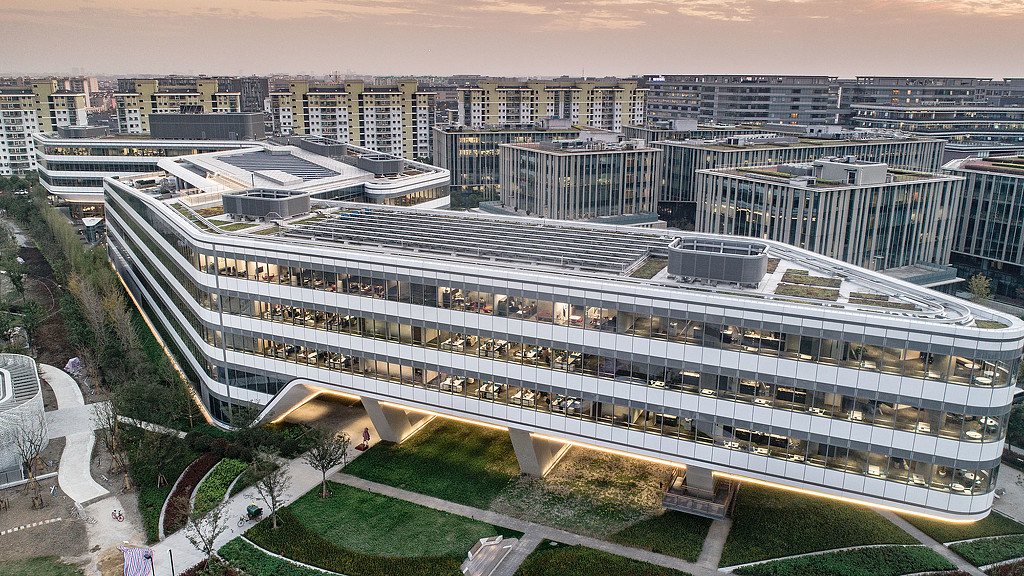COVID-19 and Building Performance: The Big Picture
July 23, 2020 | By Stephen Katz
Recently, the World Health Organization (WHO) released guidelines stating that airborne transmission of the coronavirus may be possible indoors, especially for people who spend extended periods in crowded, poorly-ventilated rooms. This news drew renewed attention to the importance of ventilation and air filtration systems to help stem viral spread. While there’s still much to be learned about COVID-19, it’s clear that the pandemic has significant implications for how buildings will function and perform in order to serve building owners and occupants alike.
As building occupants demand increased circulation of fresh air, access to outdoor spaces, and decreased density for physical distancing, building owners and managers will need to reassess all aspects of building performance to prioritize occupants’ health and safety.
From how we think about energy use to maintenance, lighting, and air quality, the COVID-19 pandemic will change the equations we’ve been using to calculate the performance side of architectural design.
Understanding the critical link between building performance and energy use.Elevating a building’s performance starts with that building’s energy use. Energy performance requirements for buildings have been trending towards major increases in energy efficiency, spurred on by new code and regulation requirements in municipalities and city governments.
Building owners must now also consider layering on to these already challenging sustainable energy reductions, potentially reassessing new amounts of energy usage in buildings due to changes in how buildings may need to function to respond to new demands and behaviors spurred by COVID-19.
At first glance this can seem like an insurmountable challenge, but we can look to several recent examples for clues to how we can take advantage of successful sustainable building performance strategies that can be scaled up for adaptation.
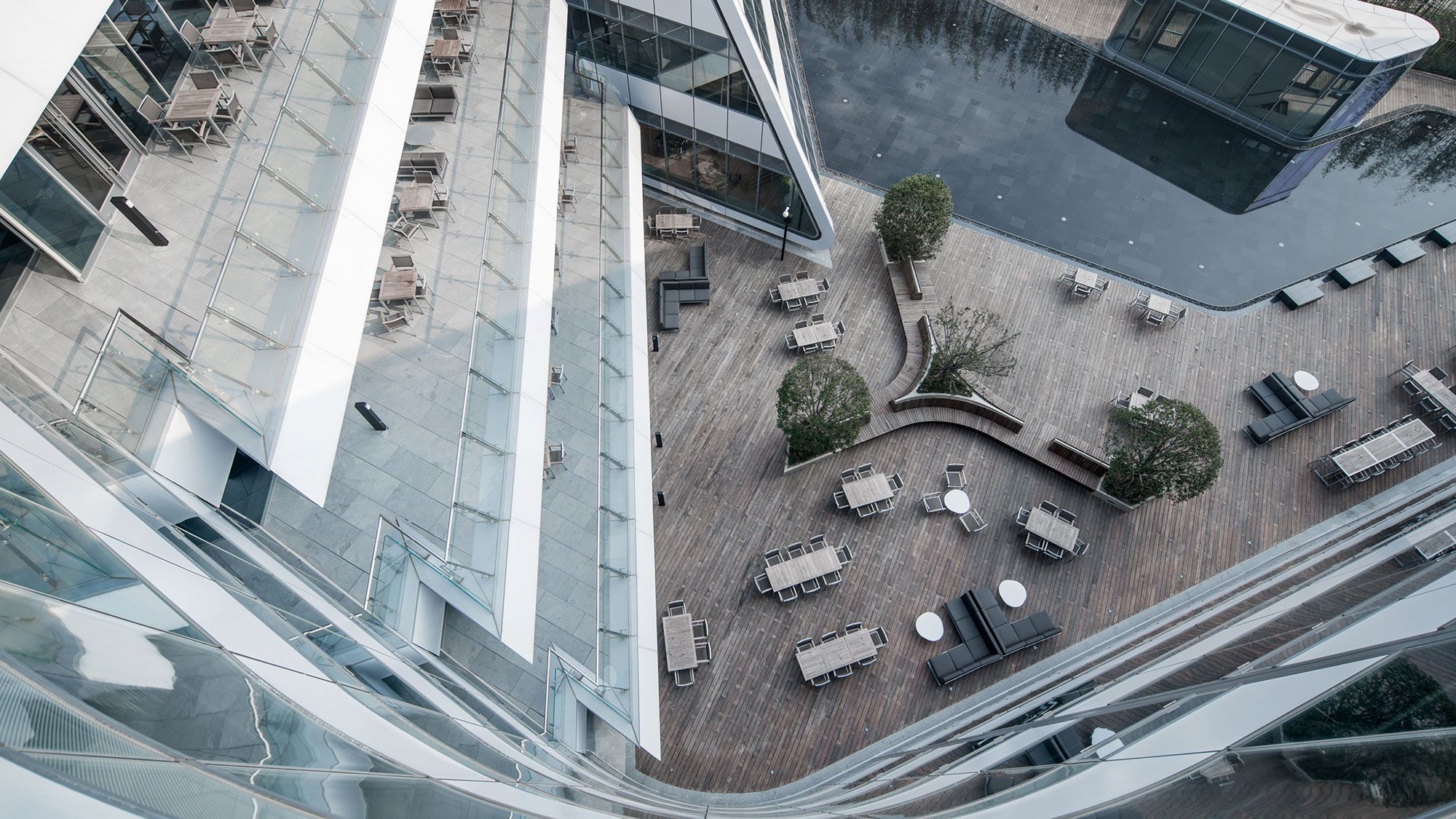
Here are some ways an increase in building performance can help respond to the challenges posed by the pandemic:
Optimize air distribution to improve air quality.Gensler recently completed the 35,000 square meter Johnson Controls (JCI) Asia-Pacific Headquarters in Shanghai. This office building uses underfloor air distribution (UFAD) with JCI’s two pipe perimeter floor mounted heating and cooling system, which provides a very efficient means of air delivery. UFAD systems supply air through a plenum beneath the finished floor using multiple floor mounted diffusers. Air is returned at the ceiling using the natural tendency of air rise, a phenomenon known as convection.
The result in this case has been improved air quality directly to where people are working. Because UFAD uses a lower static pressure for air delivery, there are also energy savings due to fan power reduction loads. This combination of improved indoor air quality and fan power energy reduction loads can make UFAD an attractive choice when considering the impacts that COVID-19 adjustments may have on building performance. Special care must be taken during construction to ensure a clean plenum space below the UFAD floor tiles and to avoid air leakage.
Many building owners are considering incorporating an advanced air filtration system as a response to COVID-19 concerns. The selection and effectiveness of air filtration systems is best evaluated with a qualified mechanical engineering team. Generally speaking, more intense air filtration systems will require corresponding increase in fan power energy use. For a typical high-rise office building, fan power can account for approximately 10% of the overall building energy consumption. A UFAD system can reduce the fan energy loads by 10-15% compared to a conventional system. This savings can help offset increases in fan power energy due to air filtration and more frequent air exchange rates.
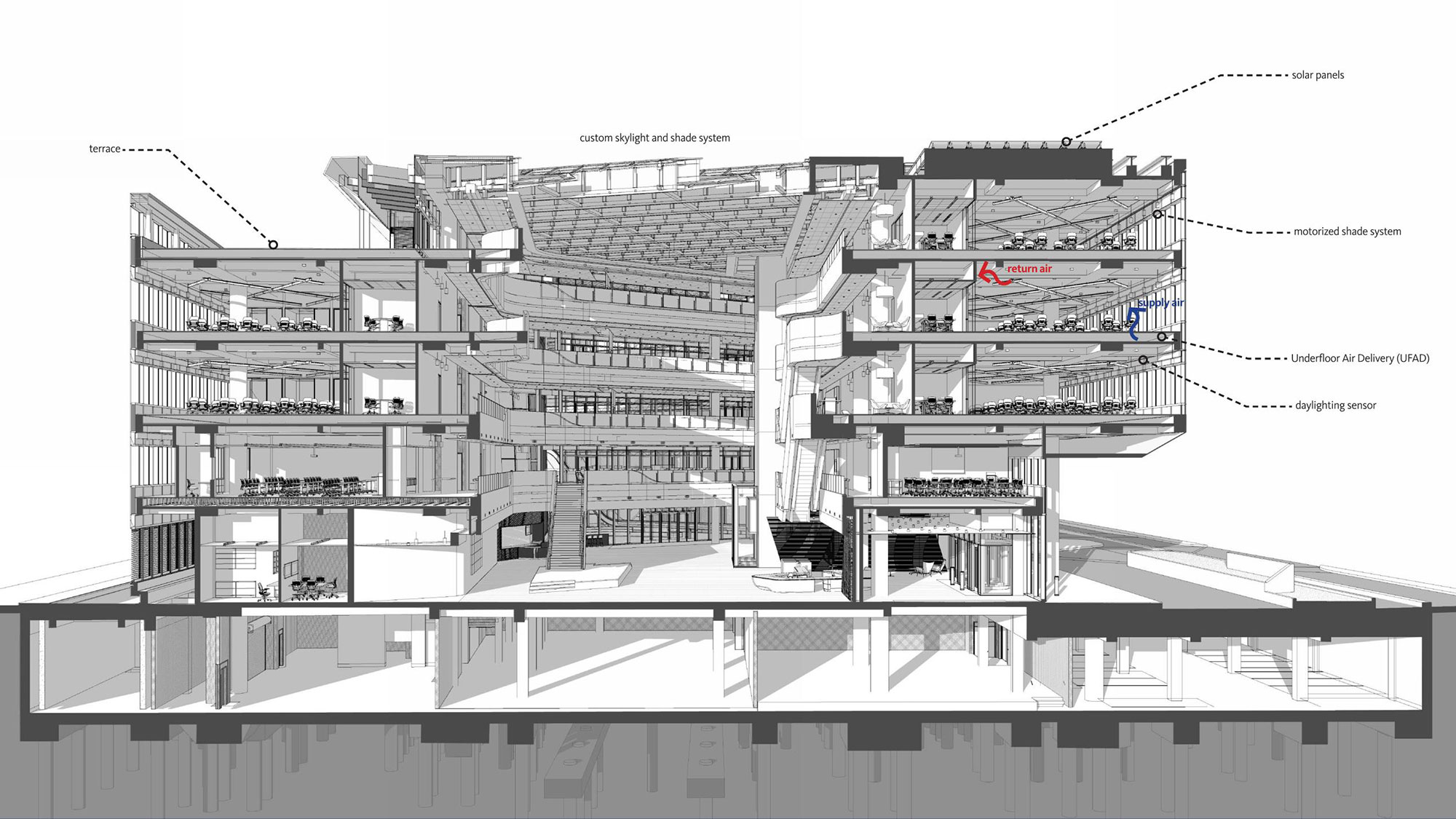
Daylighting systems are another way to curb energy usage. Occupancy sensors are incorporated to switch off lights in areas and rooms where people have left, which reduces lighting electrical loads. Motorized window shades are linked to the light system to further optimize light levels.
JCI’s Building Automation System, Metasys, gives the facilities team one platform to control all the linked lighting, shade, and sensor-based systems. This type of strategy can be used to offset increases in artificial lighting that may be needed if occupants will be working earlier and later due to staggered work times. Changes in occupant densities may require an evaluation of lighting distribution strategies, which can be managed through the Building Automation System.
Many sustainable building projects also increase access to natural daylight to avoid excessive artificial lighting. As companies try to lower the density of work areas due to COVID-19, many are considering staggered work schedules for employees. People arriving early and staying late will likely mean the lights will be on for longer periods of time. Incorporating an advanced system of lighting controls and sensors is one way that building owners can manage potential additional energy loads.
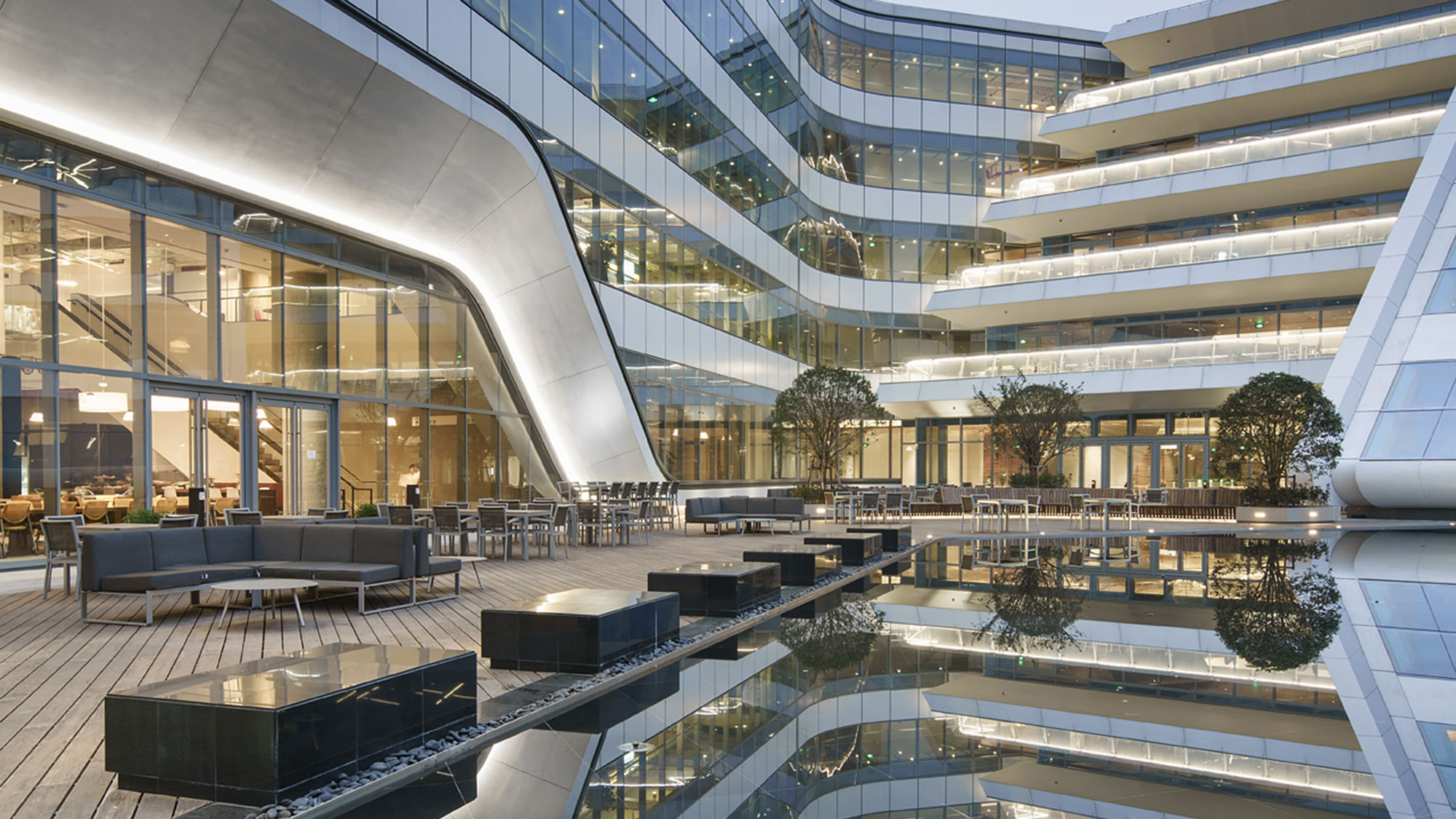
Prior to the COVID-19 pandemic, outdoor terraces were becoming a must-have amenity for almost every building type, including offices and mixed-use facilities. These spaces provide people a choice of where to work and a psychological break during the day, especially in dense, urban environments and megacities. Now, outdoor spaces serve a dual function of building well-being for workplace productivity and innovation, as well as a place where fresh air can potentially help slow the spread of communicable diseases.
Incorporating outdoor spaces into a building should take into consideration the effects of building envelope efficiency. When doors to terraces are opened without a sequenced vestibule, there is a temporary air leak, along with the potential for extreme air pressures to find their way to vertical shafts in the building, such as elevator banks. Doors are not as tightly sealed as the rest of the building façade, which makes for permanent air leakage points. Engaging with a qualified expert in the field of stack effect mitigation is recommended when considering outdoor terraces on mid-rise and taller buildings.
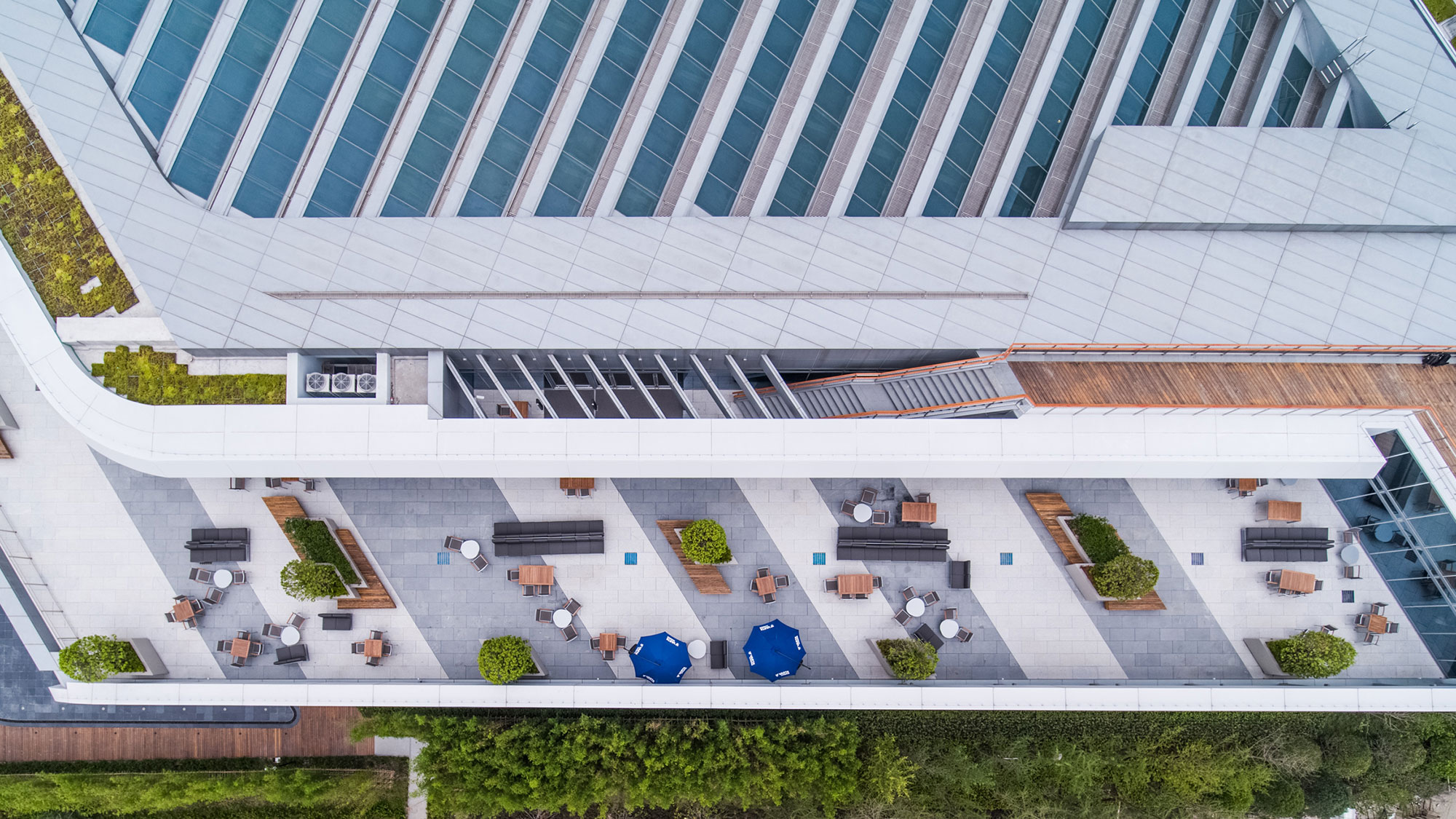
Just as the COVID-19 pandemic will force building owners to evaluate the amount of energy a building uses for mechanical and electrical systems, the next logical area to focus on is the building envelope or façade.
Glass and glazing systems are known to have poor thermal conductivity properties compared with opaque or solid wall systems. The difference between high-performing double-glazed or even triple-glazed window systems versus an opaque curtain wall panel with mineral wool insulation can be triple or more the performance in favor of the solid panel.
This is why so much attention is paid to the window-to-wall ratio, or WWR. The ratio is tabulated by dividing the glazed area of the façade by the total façade area. Building codes limit the WWR to 40% glazed and 60% opaque with exceptions proved through the submission of an energy model. The ability of a façade design to accept less glass has distinct thermal performance advantages and places less strain on the other building MEP systems.
Building energy use was already a focus of intense analysis before the COVID-19 pandemic, but it’s time for another look, especially as building owners are considering operational and mechanical upgrades to guard against the spread of the coronavirus. A truly high performing building must balance immediate needs and long-term strategies for sustainable energy use in buildings.
For media inquiries, email .
